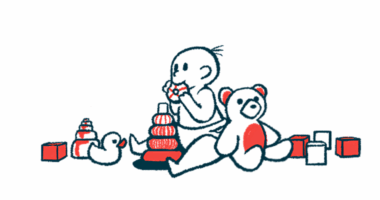Starting immune tolerance induction early linked to treatment success
Inhibitors removed in 72% of hem A children in first 2 years of ITI therapy: study

For children with severe hemophilia A who develop inhibitors — neutralizing antibodies that reduce the effectiveness of standard therapies — starting treatment to eliminate inhibitors earlier is associated with a higher chance of success, a recent study reports.
The study, “Low-dose immune tolerance induction therapy in severe hemophilia a children in China: Starting earlier resulted in better inhibitor eradication outcomes,” was published in the journal Thrombosis Research.
Hemophilia A is caused by mutations that disrupt the production of a clotting protein called factor VIII. Replacement therapy, which involves administering a functional version of this protein, is standard treatment for hemophilia A.
Although replacement therapies can be effective for controlling bleeds, in some patients, the immune system will erroneously react to the treatment as though it is an infectious threat. As a result, immune cells will make inhibitors — neutralizing antibodies that bind to the delivered clotting factor and reduce its effectiveness.
ITI aims to teach immune system not to view therapy’s clotting factor as threat
Immune tolerance induction, or ITI, is a form of treatment that simplistically aims to teach the immune system not to view the delivered clotting factor as a threat, thus stopping the production of inhibitors.
In the study, a team of scientists at Beijing Children’s Hospital (BCH), in China, conducted an analysis to see how the delay between inhibitor detection and ITI initiation affects the success of ITI.
“Hemophilia inhibitor is an emerging challenge in the relatively short history of replacement hemophilia therapy in China and most Chinese centers still lack facilities and expertise in inhibitor management,” the researchers wrote. “Thus, a large number of inhibitor patients from all over China were instead referred to BCH for management, providing BCH an opportunity to conduct this study.”
The study included data from 47 children diagnosed with hemophilia A who had high-risk inhibitors, defined as inhibitor levels higher than 10 Bethesda Units per milliliter of blood (BU/mL). All 47 were treated with ITI; 27 of them also received additional immune-suppressing therapies.
The patients were a median 28.8 months old (about 2.5 years) at the time inhibitors were first detected. The median interval time — the time from inhibitor detection to ITI initiation — was just under six months.
Within the first two years of starting ITI therapy, inhibitors were successfully eliminated in about three-quarters (72.3%) of the patients. The mean time to ITI success was 10 months. All patients successful with ITI then continued on prophylactic (preventive) replacement therapies without a relapse over the course follow-up, which lasted a mean of 13.2 months (just over a year).
Comparisons suggested that patients who had successful ITI tended to have lower peak inhibitor levels (44.8 vs. 105.6 BU/mL) and a shorter interval time (2.8 vs. 28.1 months) compared with those in whom ITI did not successfully eradicate inhibitors.
Shorter interval time was significantly linked to higher likelihood of ITI success
In statistical analyses, the researchers found that a shorter interval time was significantly associated with a higher likelihood of ITI success in all patients.
Results also indicated that an interval time of 22.3 months or less could accurately predict 85.3% cases of ITI success and 61.5% cases of ITI failure.
Models also suggested that ITI tended to take longer to work in patients who took longer to initiate treatment: every one-month delay in starting ITI was associated with a 0.1552-month increase in time to ITI success. Results also indicated that patients with an interval time of 9.4 months or less tended to experience ITI success earlier.
“We showed that shorter interval-time was associated with better ITI-outcomes both in ITI success rate and in time to success in our [severe hemophilia A] children with high-risk-inhibitors … undergoing our low-dose ITI strategy,” the researchers wrote.
An interval time of less than or equal to 22.3 months was associated with higher success rate; an interval time of less than or equal to 9.4 months predicted early success, they added.
These results are generally consistent with findings that have used ITI strategies other than the low-dose version commonly used in China, the researchers noted, but more research is needed to see how generalizable these findings are. Limitations in this study included the small sample size, single-center nature, and lack of some detailed laboratory testing, which would have been burdensome for patients.








